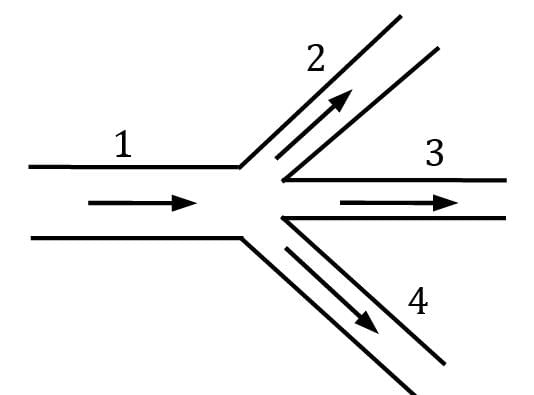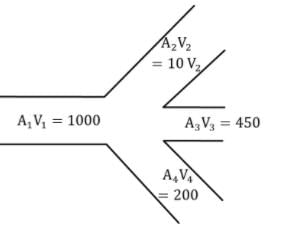Test: Fluid Kinematics Level - 1 - Mechanical Engineering MCQ
15 Questions MCQ Test Fluid Mechanics for Mechanical Engineering - Test: Fluid Kinematics Level - 1
A steady, incompressible, two–dimensional velocity field is given by V‾ = (u, v) = (0.5 + 0.8x)î + (1.5 − 0.8 y)ĵ The number of stagnation points in the flow field is
A stream function is given by ψ = 4x − 3y. The magnitude of resultant velocity at any point is
Match List-I (Pipe flow) with List-II (Type of acceleration) and select the correct answer.
List-I List-II
a. Flow at constant rate through a bend 1. Zero acceleration
b. Flow at constant rate through a 2. Local and convective acceleration
straight uniform diameter pipe
c. Gradually changing flow through a bend 3. Convective acceleration
d. Gradually changing flow through a straight pipe 4. Local acceleration
Codes:
a b c d
Which one of the following stream functions represents a possible irrotational flow field?
The velocity potential function for a two dimensional flow field is given by ϕ = x2 − y2. The magnitude of velocity at the point (1,1) is
Pipe 1, branches into three pipes as shown in the given figure. The areas and corresponding velocities are as given in the following table the value of V2 in cm per second will be

| Pipe | Velocity (cm per second) | Area (sq. cm) |
| 1. | 50 | 20 |
| 2. | V2 | 10 |
| 3. | 30 | 15 |
| 4. | 20 | 10 |
If the stream function for a 2D flow is given as ψ = 3xy, then the velocity at the point (2, 3) will be
If the velocity potential function ϕ for a flow satisfies the Laplace equation δ2ϕ⁄δx2 + δ2ϕ⁄δy2 + δ2ϕ⁄δz2 = 0 then the flow is
Circulation is defined as the line integral of tangential component of velocity along a
Which of the following flow is rotational? (where u and v are velocity components in x and y directions respectively)
For irrotational flow, the curl of velocity vector is
A flow field satisfying ⛛.V‾= 0 as the continuity equation represents
A steady incompressible 2D flow field is given by u = 2x2 + y2 and v = −4xy. The convective acceleration along x-direction at point (1, 2) is
A two-dimensional flow field is defined as V‾ = xî − yĵ. The equation of the streamline passing through the point (1, 2) is
In a two dimensional flow in x-y plane, if ∂u / ∂y = ∂v / ∂x , then the fluid element will undergo
|
56 videos|104 docs|75 tests
|





















